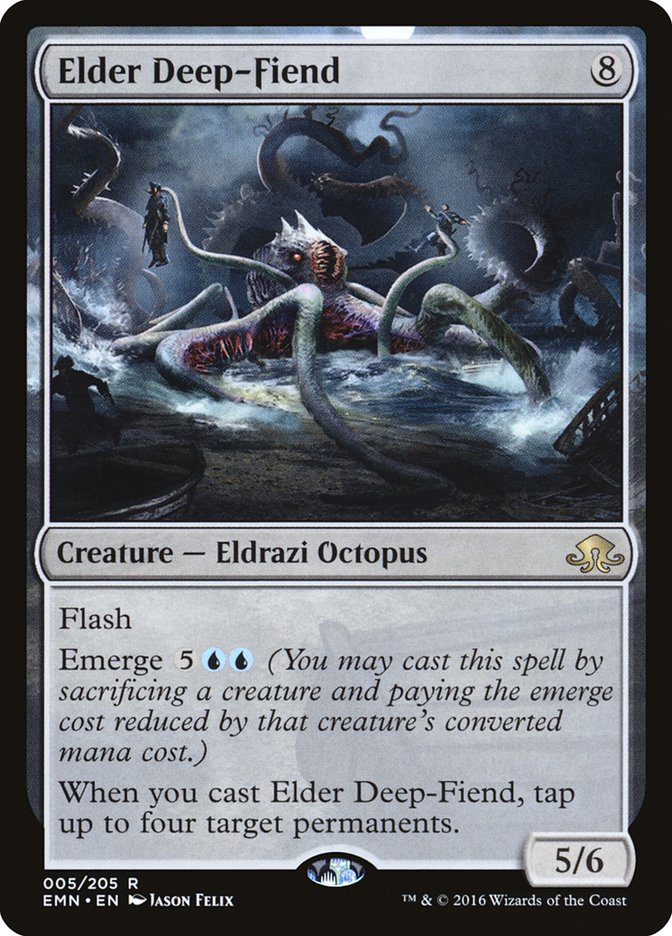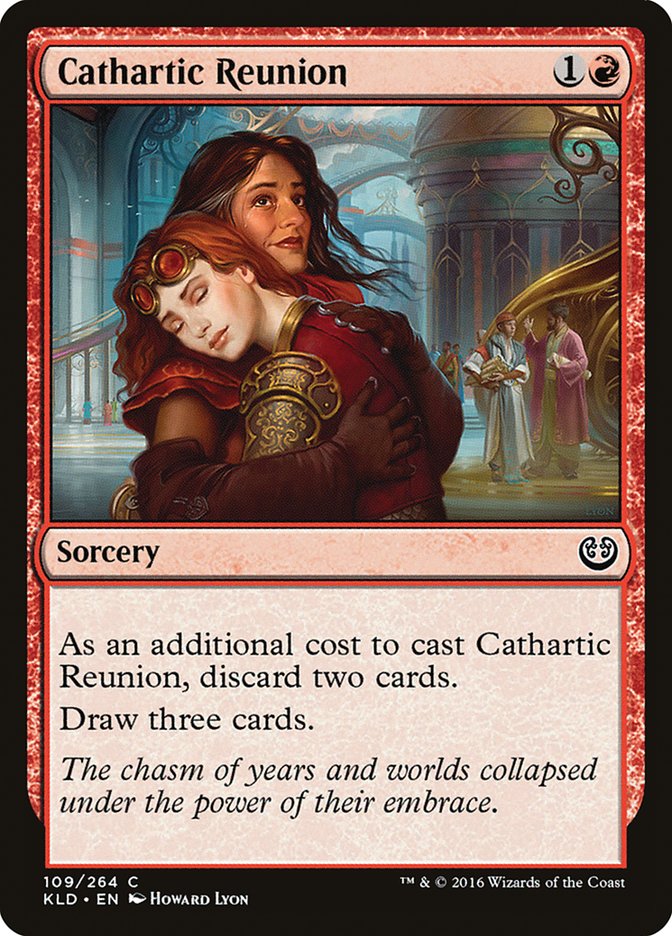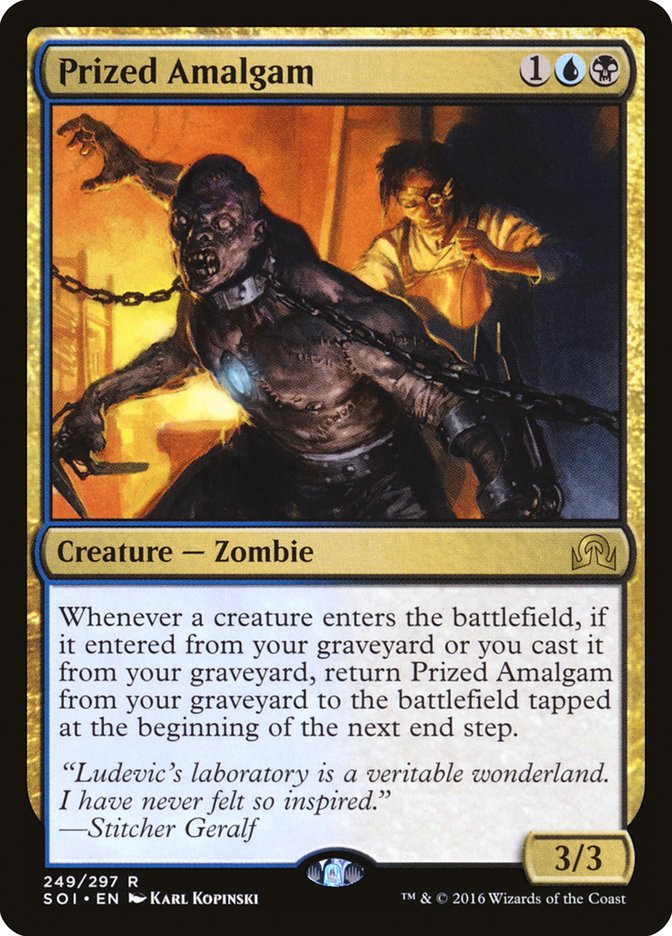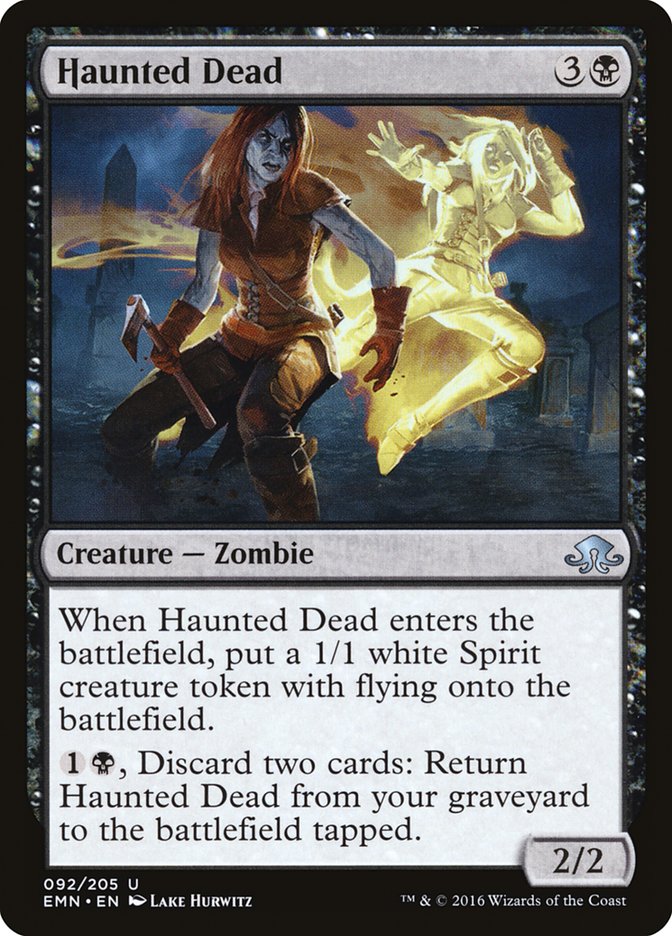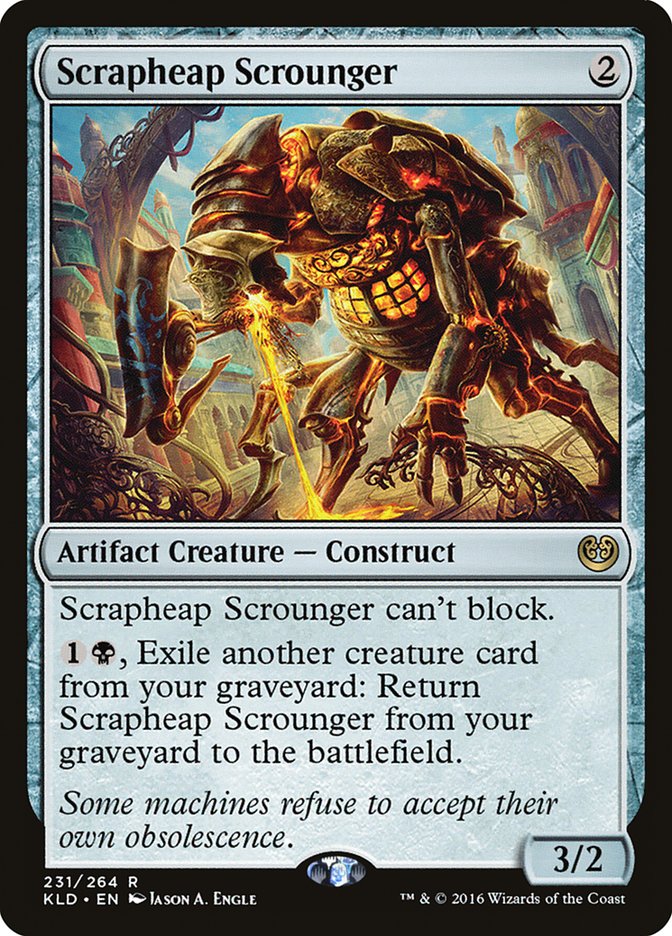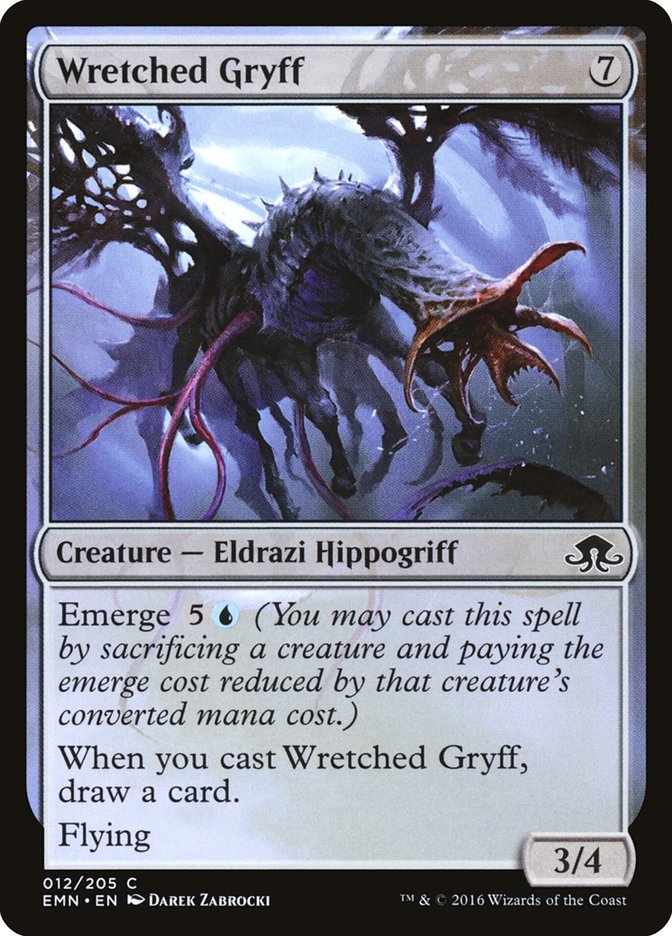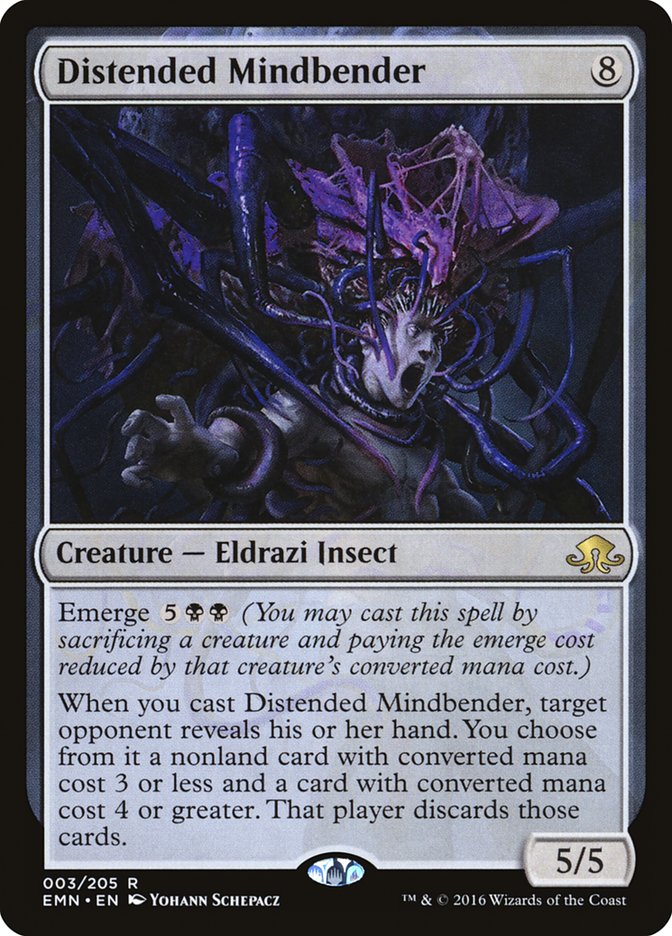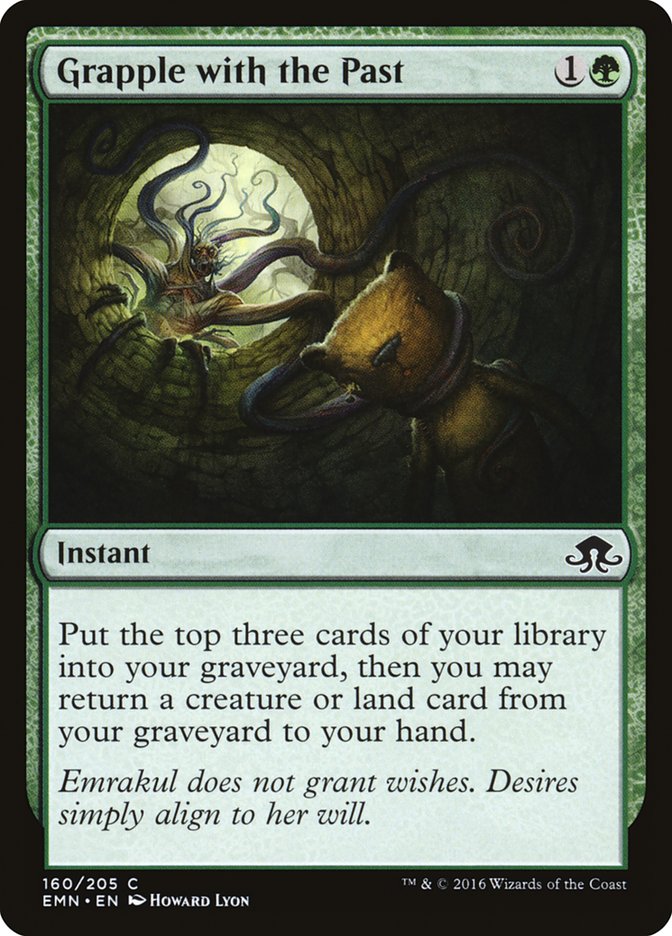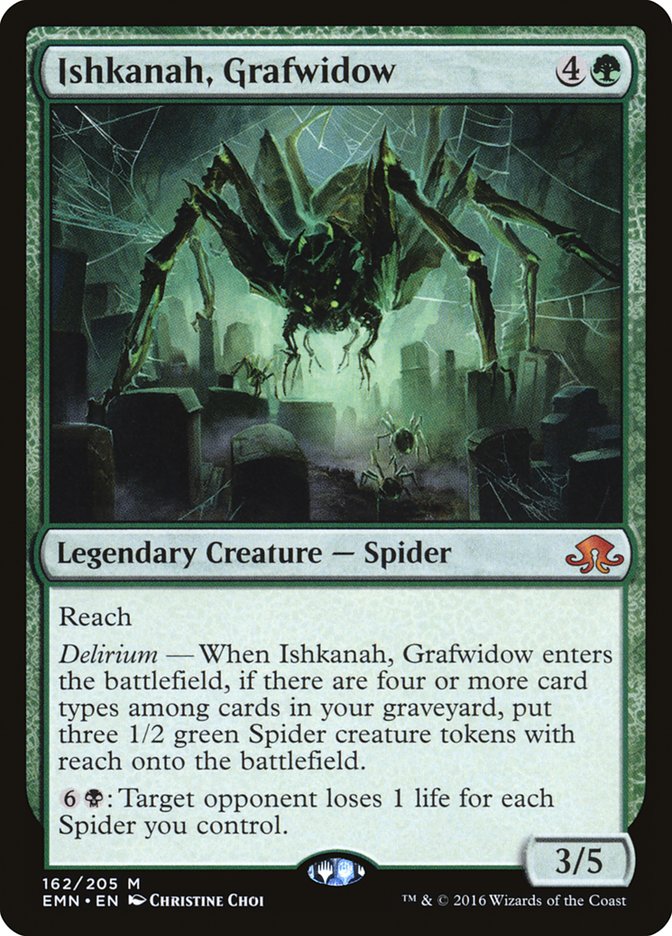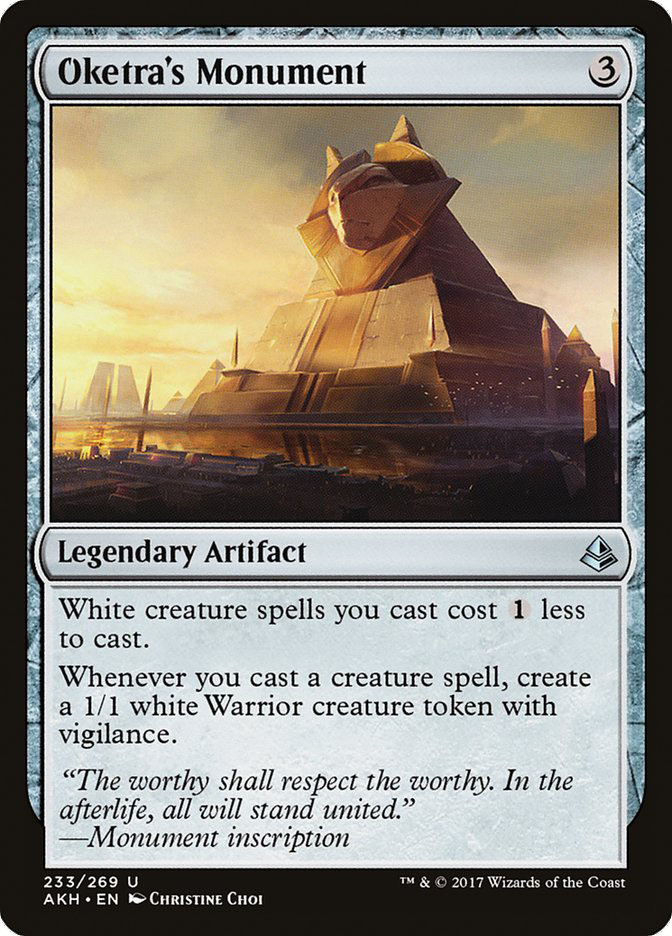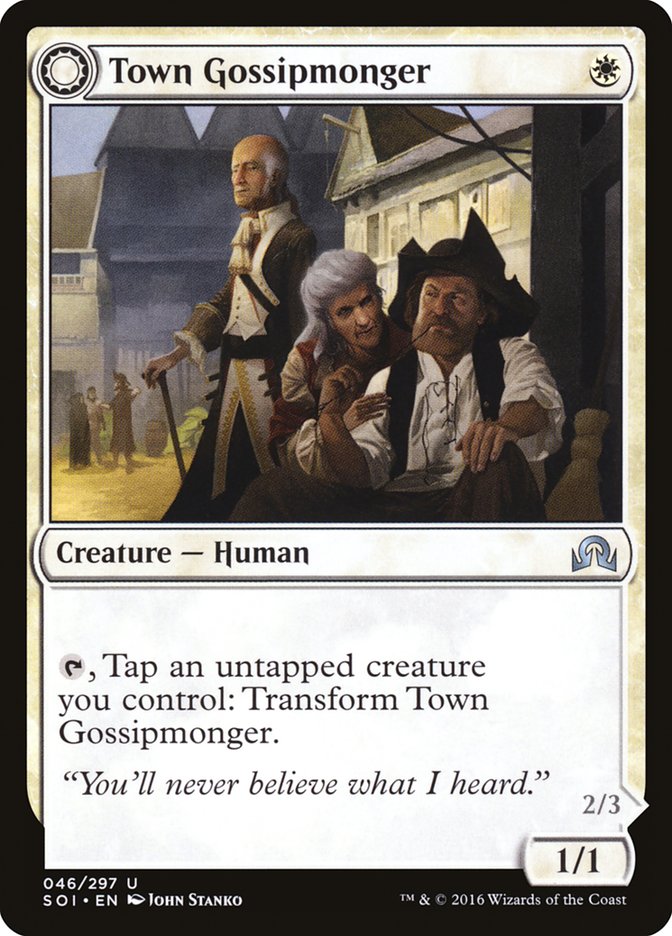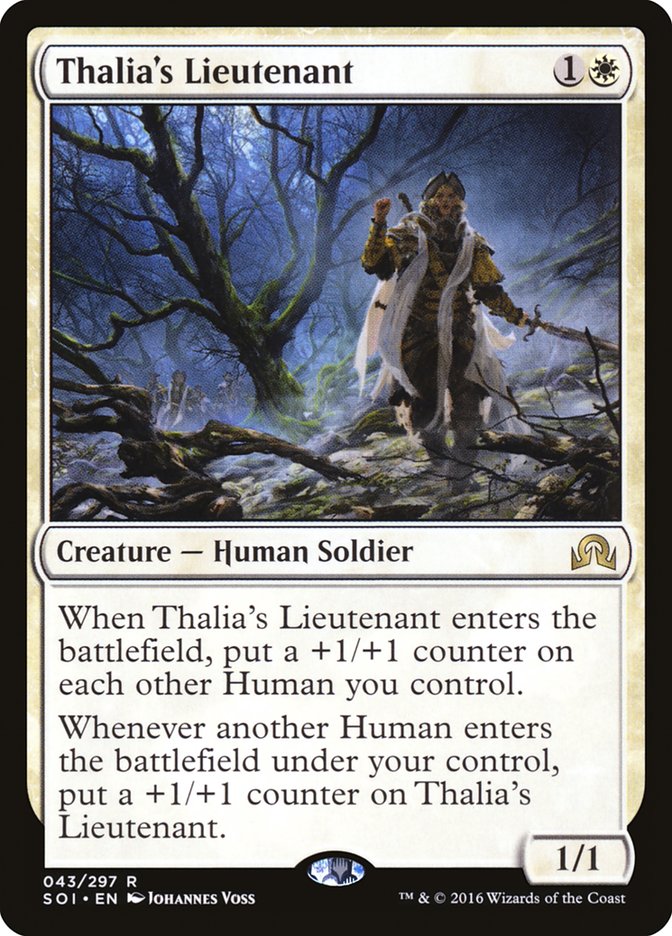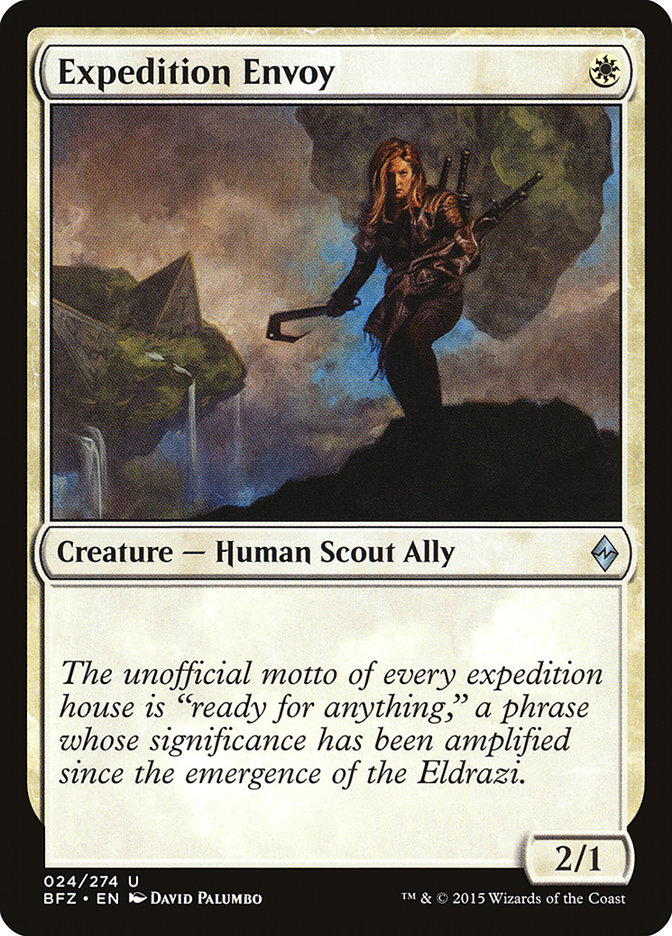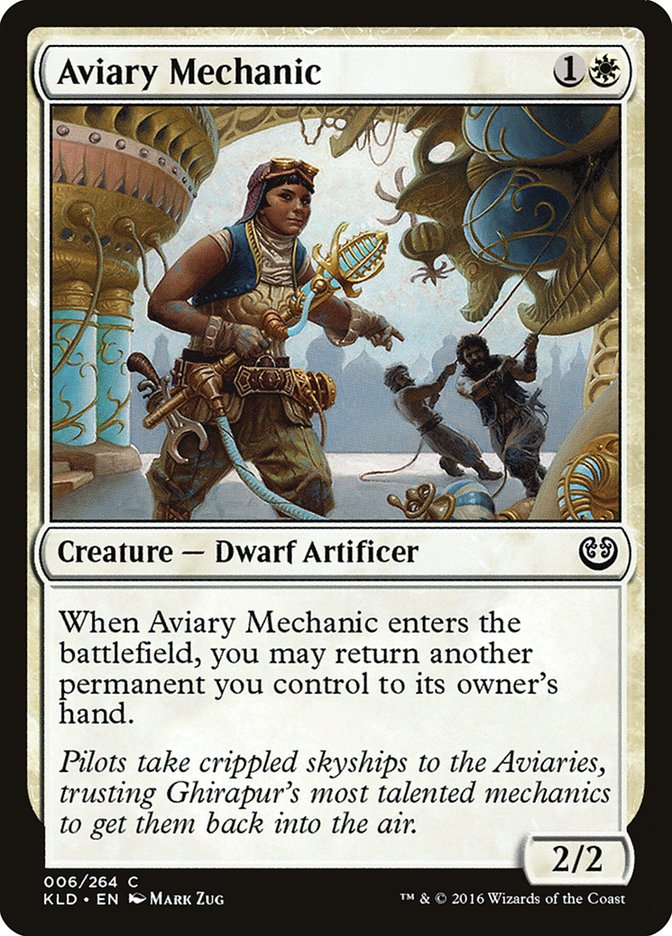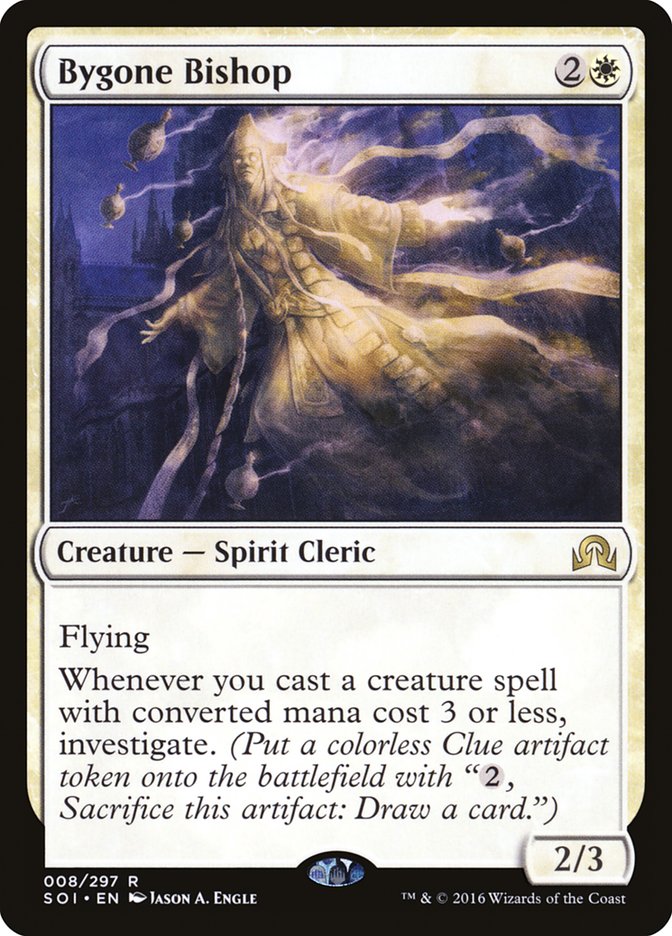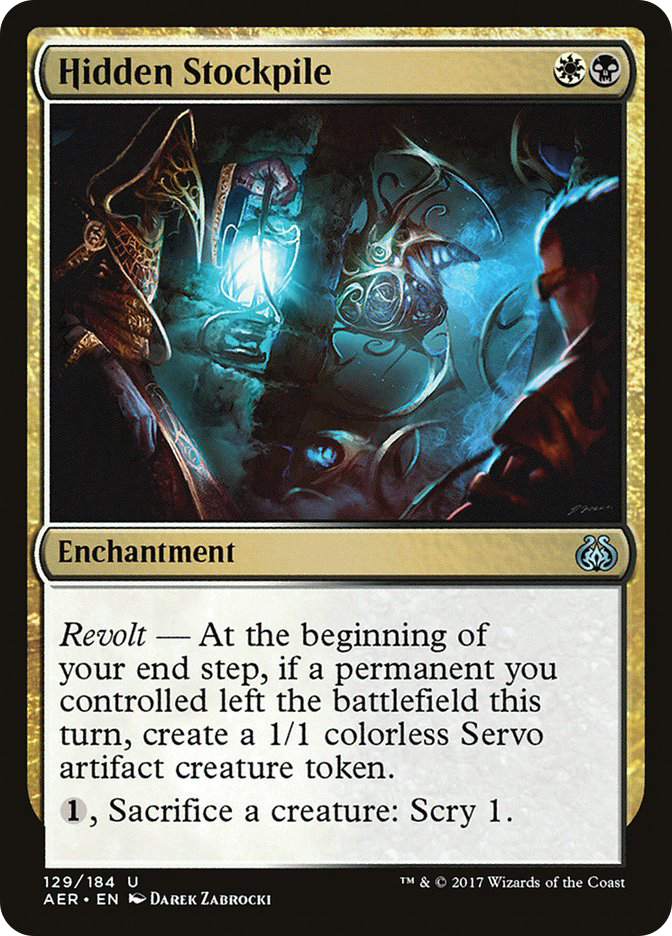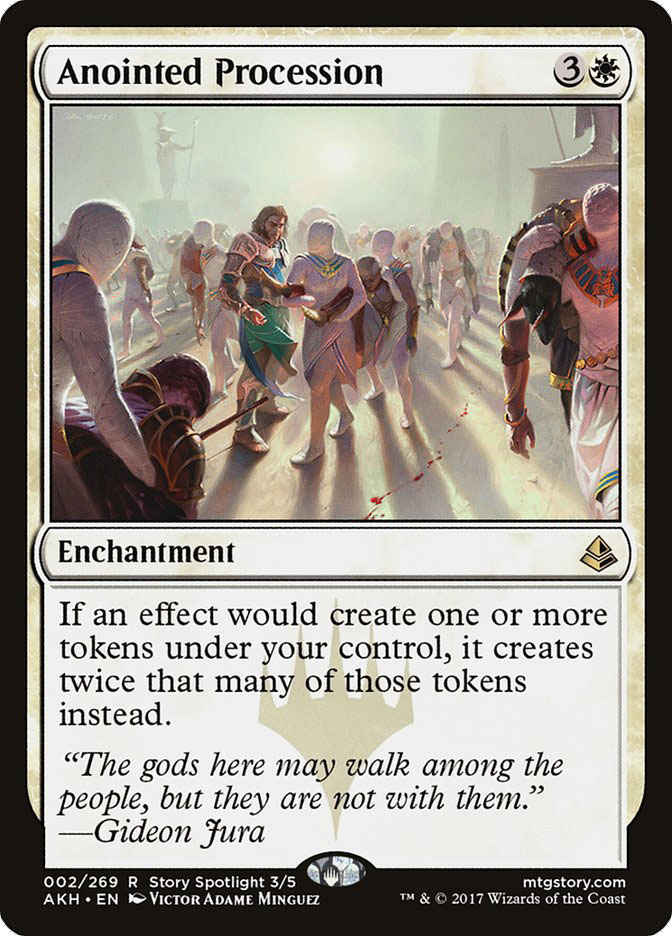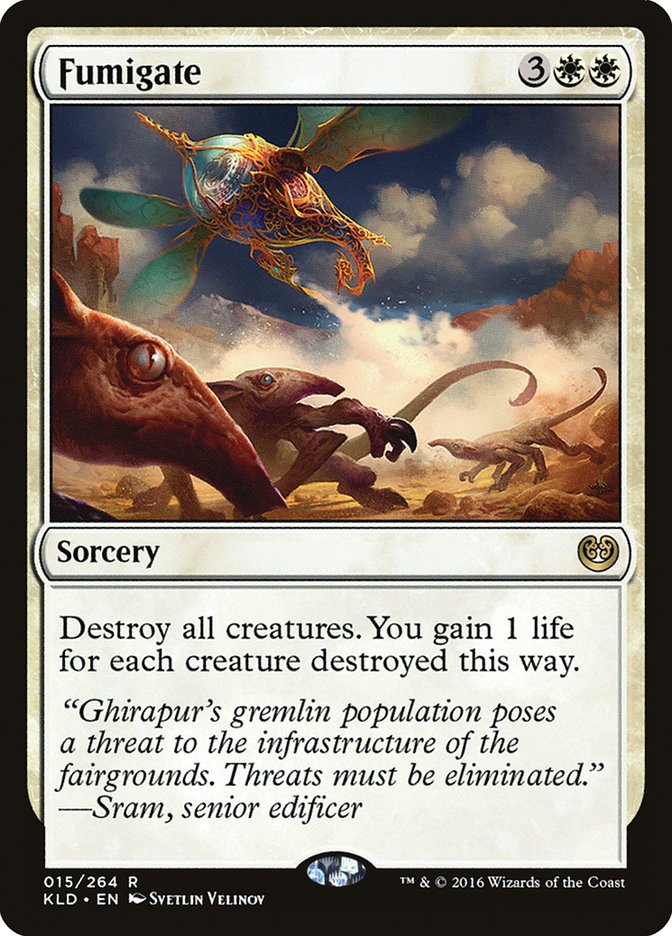It seems like an eternity since Aetherworks Marvel was banned from Standard. Now that the format is without a dominant combo deck, there’s room for the creature decks to thrive.
For reference’s sake, the current most successful four decks in Standard:
Creatures (24)
- 3 Tireless Tracker
- 4 Longtusk Cub
- 3 Bristling Hydra
- 2 Whirler Virtuoso
- 4 Servant of the Conduit
- 4 Rogue Refiner
- 4 Glorybringer
Planeswalkers (3)
Lands (21)
Spells (12)

Creatures (24)
- 4 Relentless Dead
- 4 Diregraf Colossus
- 4 Cryptbreaker
- 4 Metallic Mimic
- 4 Lord of the Accursed
- 4 Dread Wanderer
Lands (24)
- 23 Swamp
- 1 Westvale Abbey
Spells (12)

Creatures (17)
Planeswalkers (4)
Lands (25)
Spells (14)

Creatures (25)
- 3 Verdurous Gearhulk
- 4 Longtusk Cub
- 1 Bristling Hydra
- 2 Greenbelt Rampager
- 4 Winding Constrictor
- 2 Rishkar, Peema Renegade
- 4 Glint-Sleeve Siphoner
- 4 Walking Ballista
- 1 Rhonas the Indomitable
Planeswalkers (3)
Lands (21)
Spells (11)

A smattering of various control decks can do well, but I can say with a high amount of certainty that you’ll face mostly creature decks at any given Standard tournament. I expect those top four decks to be well represented at #SCGINVI.
How to best beat a creature deck? Cards that remove multiple creatures.
Of these, Kozilek’s Return looks to be the most underused and due for a comeback. Fumigate is largely a sideboard card that can really catch people in Game 1. Archangel Avacyn has seen less play since Glorybringer’s printing. Sweltering Suns is a solid medium and is on the list for completeness sake.
To succeed in Standard during this lame-duck period of Standard before the release of Hour of Devastation, if you’re not one of the big four decks, you need to be packing sweeping effects or have the ability to go wide. Optimally, you want both.
Kozilek’s Return and Elder Deep-Fiend
Creatures (16)
Lands (22)
Spells (22)
- 4 Fiery Temper
- 4 Lightning Axe
- 4 Tormenting Voice
- 4 Kozilek's Return
- 2 Fevered Visions
- 4 Cathartic Reunion
Sideboard

U/R Emerge was once a reasonably well-known and played Standard deck. It wasn’t good against the combo decks as the main appeal to playing U/R Emerge is “flashing back” Kozilek’s Return. Elder Deep-Fiend has been a good card this whole time and is the best seven-plus-cost Eldrazi available, especially given that it has flash to enable an instant-speed Kozilek’s Return.
U/R Emerge has no way to naturally cast Prized Amalgam. With Tormenting Voice, Cathartic Reunion, and Lightning Axe, they’re rarely stuck in hand.
This U/R Emerge list is pretty stock, and a good place to start once it’s been confirmed that Standard is soft to Kozilek’s Return. The logical next step is to revisit what the Grixis builds looked like.
Creatures (23)
- 4 Prized Amalgam
- 2 Stitchwing Skaab
- 3 Insolent Neonate
- 2 Wretched Gryff
- 4 Elder Deep-Fiend
- 4 Haunted Dead
- 1 Distended Mindbender
- 3 Scrapheap Scrounger
Lands (23)
Spells (14)

I played against Katubuta on Magic Online Wednesday night. The Grixis deck looked like everything I wanted to be doing in Standard. I took mental notes about what I saw as to piece it together later to play with. Luckily, Katubuta went 5-0 in a League and the decklist was published, making my job easier.
I prefer Haunted Dead to either Stitchwing Skaad or Advanced Skaab since Haunted Dead and the Spirit token are spread across two bodies and the Spirit enters the battlefield untapped, allowing you to block if needed. Scrapheap Scrounger adds to the engine as a payoff to filling your graveyard and a way to bring back Prized Amalgams.
The Grixis build is so dense with cards that you want in your graveyard that Perpetual Timepiece starts to make sense. Similar to Shriekhorn in old Modern Dredge lists, Perpetual Timepiece gets the engine going, hopefully getting a Skaab or Haunted Dead in the graveyard, allowing you to pitch copies of Kozilek’s Return or Prized Amalgam.
I really like how Katubuta’s list played three more Eldrazi to trigger Kozilek’s Return. The U/R Emerge deck felt a little short in that department at times, and I usually ended up sideboarding in the one Wretched Gryff. U/R Emerge played fewer colors, of course, and could better support Sanctum of Ugin as more virtual copies of Eldrazi. Given the three-color Grixis, there’s less freedom to mess around with colorless utility lands.
Creatures (16)
- 1 World Breaker
- 2 Tireless Tracker
- 3 Elder Deep-Fiend
- 1 Ishkanah, Grafwidow
- 3 Servant of the Conduit
- 4 Rogue Refiner
- 2 Glorybringer
Planeswalkers (2)
Lands (23)
Spells (19)

Temur Emerge can hide the fact it’s a Kozilek’s Return deck for several turns, posing as a normal Temur Energy deck. Even if you cast an early Traverse the Ulvenwald, I doubt many players will piece everything together and put you on Emerge.
You also get a delirium package with Traverse the Ulvenwald and some solid one-ofs in World Breaker and Ishkanah, Grafwidow. Traverse also counts as more copies of Glorybringer and Elder Deep-Fiend, allowing you to shave numbers. Grapple with the Past enables delirium, rebuys key creatures, and sometimes gets a Kozilek’s Return in the graveyard.
You don’t get to play Longtusk Cub or Bristling Hydra, so you really don’t have any of the aggressive openings that snowball out of control like Temur Energy can.produce. What you gain is a huge toolbox and access to Kozilek’s Return and Elder Deep-Fiend, a tradeoff that I feel is favorable.
I think Temur Emerge is an awesome evolution from normal Temur Energy and can see it quietly being the breakout deck of the Invitational. The deck is extremely hard to play, so you’ll probably see pilots smarter than I am doing well with it.
White Token Decks
Creatures (27)
- 4 Bygone Bishop
- 2 Archangel Avacyn
- 4 Thraben Inspector
- 4 Pious Evangel
- 4 Hanweir Militia Captain
- 4 Selfless Spirit
- 4 Aviary Mechanic
- 1 Fairgrounds Warden
Lands (24)
Spells (9)

Now, Mono-White is more my speed!
If you haven’t seen the Mono-White Monument deck, yet check out Ross Merriam’s Daily Digest piece on it earlier this week. It’s been gaining popularity and I wouldn’t be surprised to face it this weekend.
I’ve been trying to make Mono-White work for months. I was just playing the wrong cards.
The golden age of Humans has passed.
Several different people have recorded 5-0 results with Mono-White decks centered around Oketra’s Monument. The above list looks to be the most-developed thus far.
You really can go off with Aviary Mechanic, Bygone Bishop, and Oketra’s Monument. Selfless Spirit is naturally good and insulates you against sweepers. Combined with Archangel Avacyn, you can cast your own Sweltering Suns on command.
Even returning a Thraben Inspector with Aviary Mechanic will grant you marginal value later in games.
Dusk // Dawn fits perfectly with the small-creature shell. It’s a one-sided sweeper that ensures that your weenies don’t get outsized and really puts the hammer down on Winding Constrictor decks aiming to grow enormous creatures. The Dawn side recurs every creature in your deck outside of Archangel Avacyn, something that can out-advantage an active Tireless Tracker or various planeswalkers.
The big recent innovation is adding Pious Evangel. Much like Soul Warden, Pious Evangel makes racing situations favorable. On the flip side, once Pious Evangel is transformed into Wayward Disciple, combat gets extremely favorable, making blocking almost irrelevant to your creature swarm.
Pious Evangel can munch an extra copy of Oketra’s Monument or trigger Archangel Avacyn when the time is right. Overall, I like the utility that Pious Evangel provides without needing to be protected like Fairgrounds Warden.
Creatures (8)
Planeswalkers (4)
Lands (27)
Spells (21)

This final deck is the one I’m closest to registering for #SCGINVI and is the Standard deck I’ve played the most with on Magic Online, even though it’s only been around a few days. To my knowledge, the original take on the deck was by MTGO user HYPHON6845, with the original concept likely a derivative on Sam Black’s Abzan Tokens deck.
The additional combo enchantments of Ulvenwald Mysteries and Cryptolith Rite have been abandoned for a two-color manabase and a few generically good cards like Cast Out; Gideon, Ally of Zendikar; and Fatal Push.
W/B Tokens plays out like a traditional Orzhov Control deck, keeping the battlefield clean with spot removal and Fumigate and sometimes going to town with Gideon, Ally of Zendikar. Underneath that hood remains Hidden Stockpile and Anointed Procession, both of which work well in multiples in your real late-game plan.
If your opponent is trying to nickel-and-dime value on you with Rogue Refiner and Tireless Tracker, then you’ll end up going way over the top of them. Your cards (literally) exponentially increase in strength with each copy of Anointed Procession you can land. Some decks can go big and long, but not when your life total and creature count are both in the hundreds.
Four Fumigates are very necessary to catch back up when you’re casting enchantments that don’t necessarily do anything relevant the turn you cast them. You don’t even mind losing a pile of 1/1s and an Anointer Priest when you’re killing off two or three of your opponent’s creatures while gaining a healthy amount of life in the process. The name of the game is not dying, as you ought to win the long games.
For #SCGINVI (which probably already begun by the time you read this), you need to play a stock creature aggro/midrange deck or come prepared to beat them. The Standard portion of the Invitational doesn’t begin until Round 5, so I’ll have a good four hours to mull my Standard deck choice over before submitting a decklist at around 4pm today.
What do you think I should play?
Which of the following will I register for #SCGINVI?
— Tom Ross (@Boss_MTG) June 29, 2017



